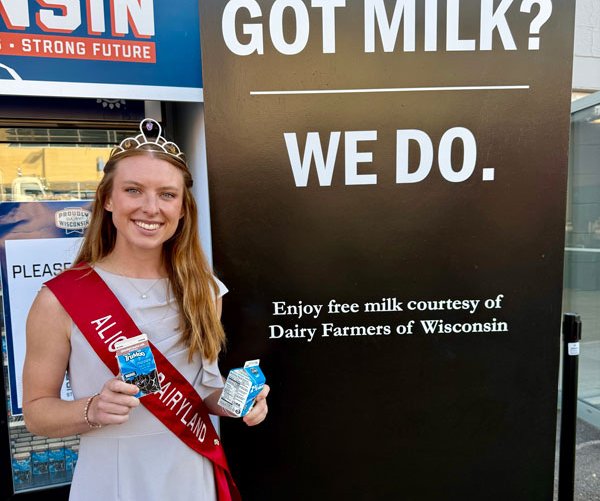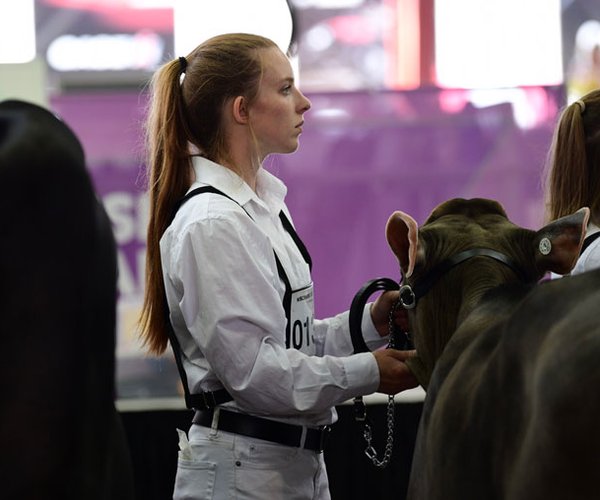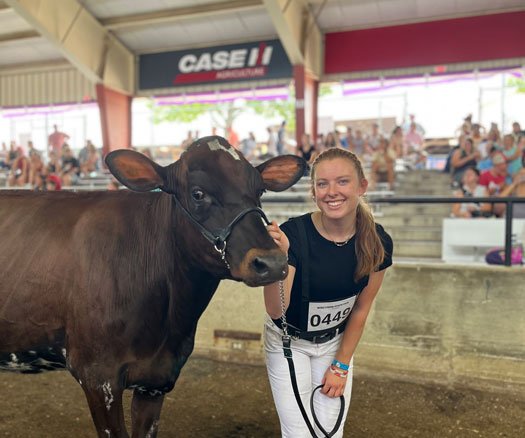When you think of Wisconsin, you might think of dairy, cranberries, or cherries. Did you know Wisconsin is also home to a growing number of alpaca farms?
According to the Alpaca Owners Association, alpacas are members of the Camelid family that originated in North America more than 40 million years ago and were domesticated in South America. Camels and llamas are also familiar members of the Camelid family. Despite being closely related, alpacas and llamas are quite different from each other. Alpacas are about half the size of llamas and are typically used for their soft fiber, while llamas are primarily used as pack animals or for guarding herds of sheep or alpacas.
Domesticated alpacas first came to North America in the 1980s and soon made their way to Wisconsin. Wisconsin ranks 11th in the country on the alpaca registry hosted by the Alpaca Owners Association, with 7,800 of the nearly 265,000 alpacas registered in the U.S. calling Wisconsin home. According to the Great Lakes Alpaca Association, alpacas are earth friendly, resulting in their growing popularity. They eat a wide variety of native grasses and thrive on moderate amounts of water, making them adaptable to many environments. Eating only the top part of plants, alpacas do not pull forages out by the roots, allowing the plants to continue to grow.
Typically living for 15-20 years, they are very social animals, communicating with each other through both body positioning and gentle humming. Alpacas thrive in groups of three or more, and should be housed with animals of the same sex. Primarily eating grass and hay, alpacas eat about two pounds of food per 125 pounds of body weight each day. They are pseudo ruminants, with a single stomach that is divided into three compartments. They produce rumen and chew cud, which enables them to process their food very efficiently.
Similar to sheep, alpacas are typically sheared once a year. However, their fiber is three times warmer and seven times stronger than sheep wool, plus it is light weight and water resistant, which gives it a soft feel and sleek look. Alpacas naturally produce fibers in 22 colors, and alpaca goods are considered hypoallergenic. Each alpaca will produce three to ten pounds of fiber a year, which can then be woven to produce a variety of warm, soft, and durable goods available all year long.
One of the highlights of the state fair each year is the London Dairy Alpaca area, which features apparel and gifts made out of alpaca fiber, plus an educational display and live alpacas! There’s no better way to develop an appreciation for the lovely alpaca than by getting to meet them face to face and feeling the alpaca fiber products for yourself. You can be sure to find me in their tent next to the racing pigs at least a few times during the best 11 days of summer!
One of the most amazing parts of being Alice in Dairyland is being able to experience different parts of Wisconsin agriculture in a whole new way. Hearing right from the producers as they show me their passions is endlessly rewarding. Whether it is ginseng, potatoes, cattle, or alpacas, I cannot wait to see what’s next!
— Halei Heinzel is the 77th Alice in Dairyland, Wisconsin’s agriculture ambassador who works with media professionals to educate consumers about the importance of agriculture to Wisconsin’s economy and way of life. She can be reached at halei.heinzel@wisconsin.gov.





